Fly Fishing for
Largemouth Bass
By Bryan Thrift |
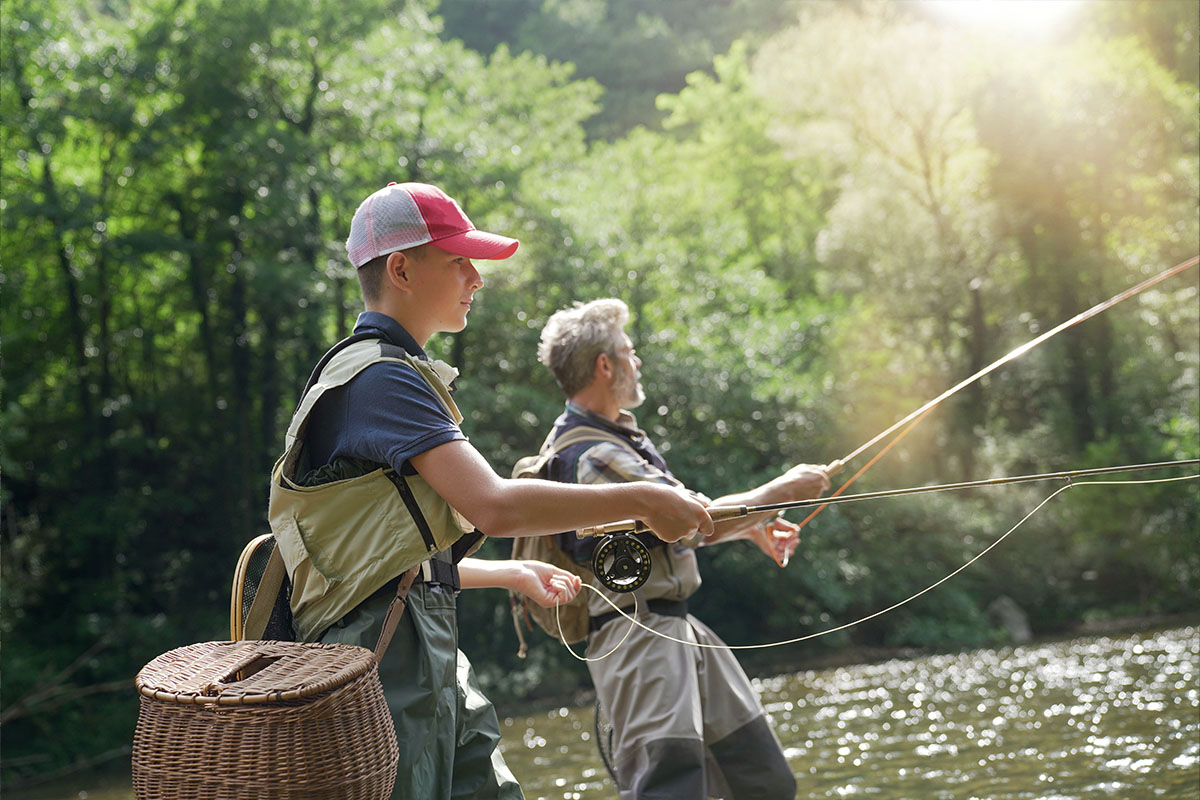
Largemouth bass are one of the most popular fishing species in the U.S., thanks to their ready availability and the fun of bringing them in from the lake. When you’re flyfishing for bass, there are plenty of flies and lures that will attract these foragers. Whether you’re setting out to catch bass on your fly rod for the very first time, or looking for expert tips to guide your hundredth trek out to the water, this guide will walk you through everything you need to know for a successful fishing expedition.
Where Should I Fly fish for Largemouth Bass?
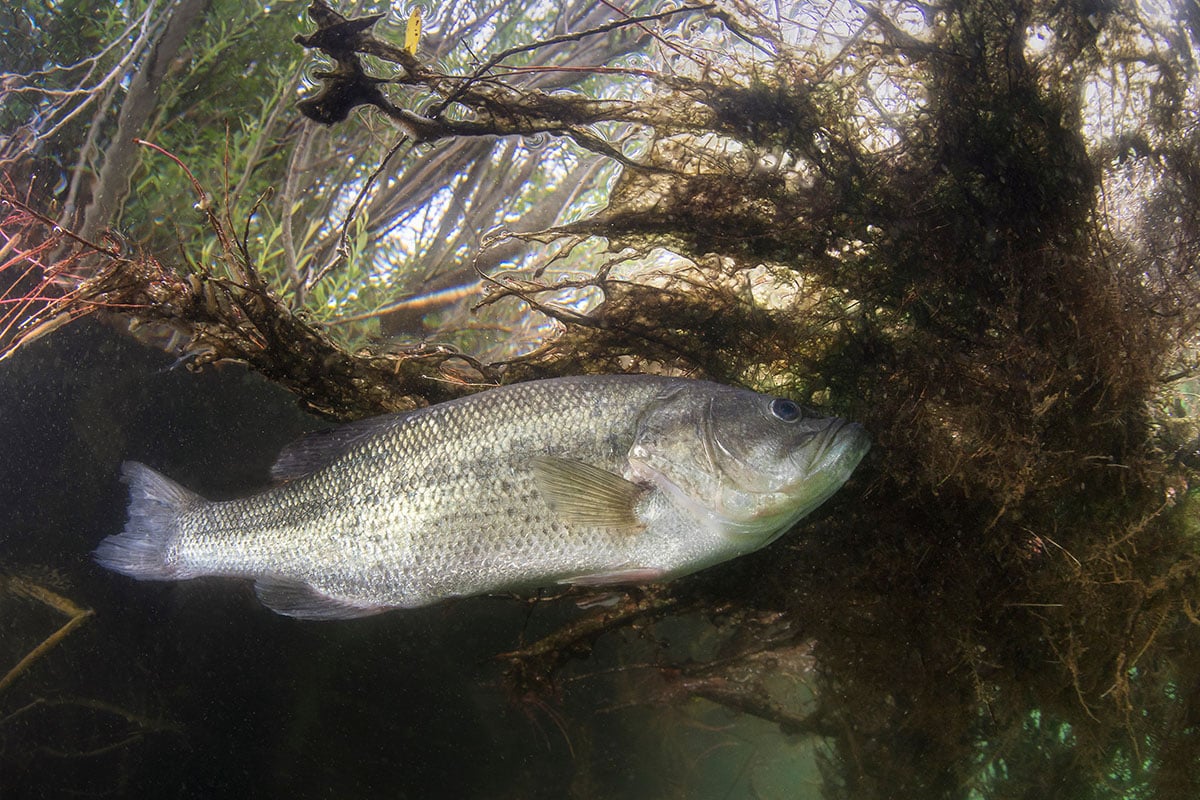
When you’re planning your first outing, you need to choose a body of water that is likely to have bass in it. Bass can be found in ponds, rivers, and streams all across North America. You can research your local bodies of water to find out which are likely to have bass in them.
Largemouth bass are typically attracted to weedier, darker areas. If you’re flyfishing in a river, check for bass in weedy areas that also have slower-moving waters. Logs and roots also help block the current and provide cover, which may attract bass. Many fly fishers can just wear waders and cast their lines while standing in the river.
In larger rivers and lakes, you’ll want to find a map of the lake’s structure to determine where the shallow areas are, which are most likely to have largemouth bass. You’ll likely need to use a boat for these deeper waters, and we’ll discuss how largemouth bass change positions over the seasons in the next section. You should cast toward structures such as trees, shoals, docks, and other places that can provide cover for bass.
It can be intimidating to think about covering a whole big lake with just your flyfishing rod. But you don’t need to focus on an entire large body of water: just plan on exploring one bit of shoreline or one intriguing drop-off during each outing. Even though it may be painstaking, it’s an investment in your knowledge of the area, and that will pay off for seasons to come.
When Should I Fly Fish for Largemouth Bass?
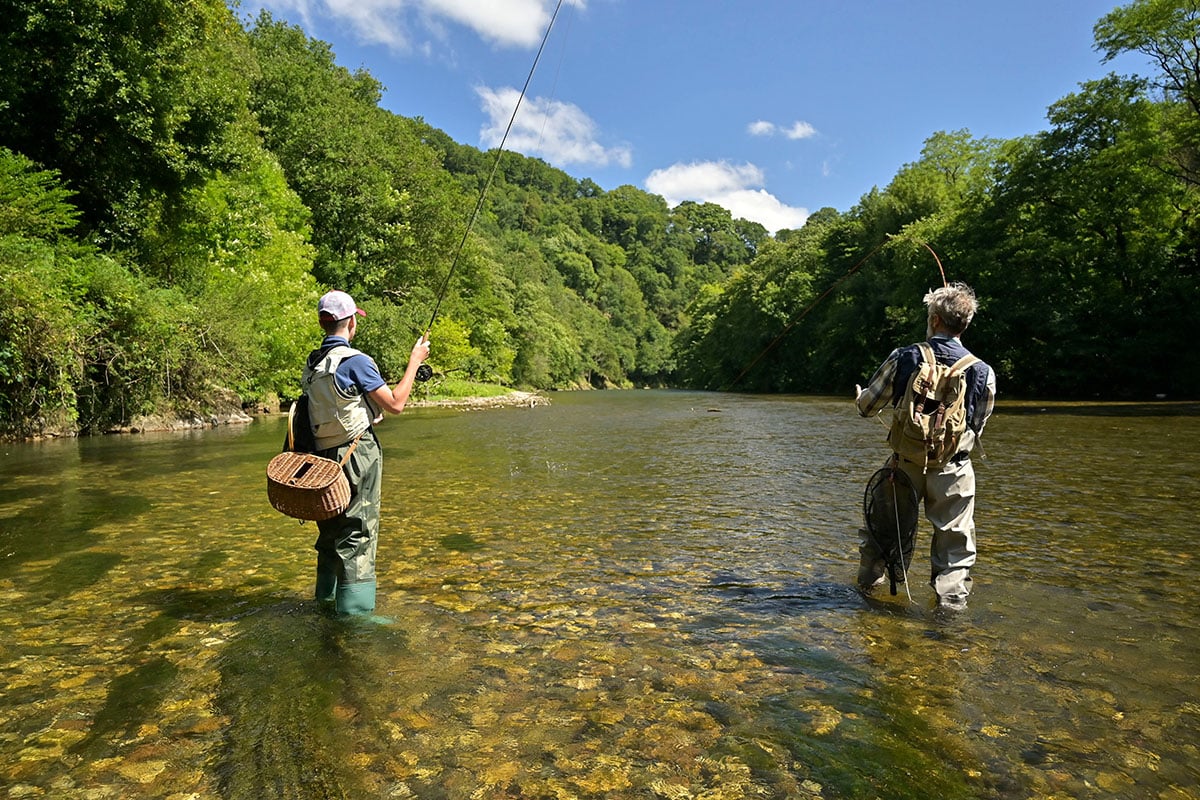
First, you want to make sure you’re setting yourself up for success by fishing the right part of the lake based on the season. In springtime, the water will get warmer. This will cause bass to frequent the shallower parts of the lake as they become more active and begin to spawn.
In the summertime, as the water gets even warmer, largemouth bass will continue to frequent the shallows, especially around Lilli pads and other weedy, darker areas. This is different from smallmouth bass, which tend to move toward deeper waters as temperatures rise.
Both kinds of bass can be found in the shallows at dawn and dusk during the summer months, and this is the most promising time to fish. Remember, when you’re flyfishing, you won’t be able to cast to those deep areas where bass sometimes lurk. You therefore want to target the hours when bass are most likely to be moving and on the hunt, when your fly will be most appealing to them. If you do want to target deeper waters, you may want to use sink tips or full-sink lines.
In the fall, largemouth bass will be in the shallows focused on feeding. They will even follow their prey toward the shoreline as night begins to fall.
What Should I Use on Largemouth Bass?
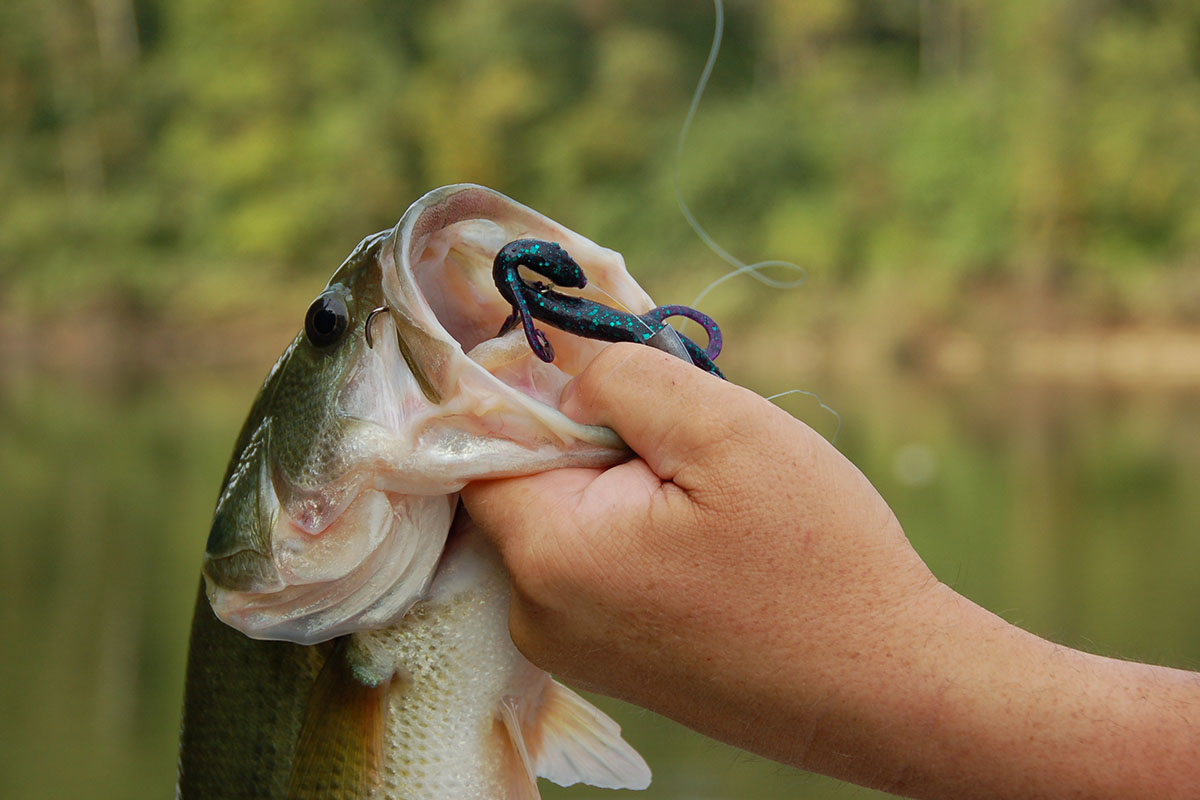
You’ve picked your spot, you know when you’re going – now it’s time to pack your gear. But what are bass going to respond to best?
Best Flies
The core principle behind choosing flies is to imitate a bass’ prey. This might mean flies that are meant to look like frogs or mice on top of the water, or like baitfish or crayfish under the water.
Bass are a great species to start flyfishing with, because they are easy to fool with your flies. In other words, most flies will work pretty well on largemouth bass. You need something that will move realistically through the water, and the bass is quite likely to attack it.
Once you choose your fishing spot, you can look around to see what kind of prey the bass in your particular area might be interested. Are you seeing lots of crayfish, or lots of minnows? If you see one or the other, it’s a good idea to find flies that mimic that one. Streamer flies imitate minnows well, and you can choose one of roughly the same size and shape as the minnows you see in the water. Then, you can cast your fly right around the area where you’re seeing lots of prey.
If you’ll be fishing after dark, it’s a good idea to use larger flies or lures. Rat, frog, and duckling are common choices that bass can still see well in low light.
Rod & Tackle
For largemouth bass, you’ll have your choice of rods. An 8 weight rod is best, because flies for bass tend to be larger and you need the extra power to get those flies through the air.
You can get a pretty straightforward reel for bass fishing. More expensive reels will get you a sophisticated drag system, but since bass don’t typically pull on the line, this is not a necessary investment for this fishing purpose. You can pair this with a line with a weight forward taper.
How Should I Fish for Largemouth Bass?
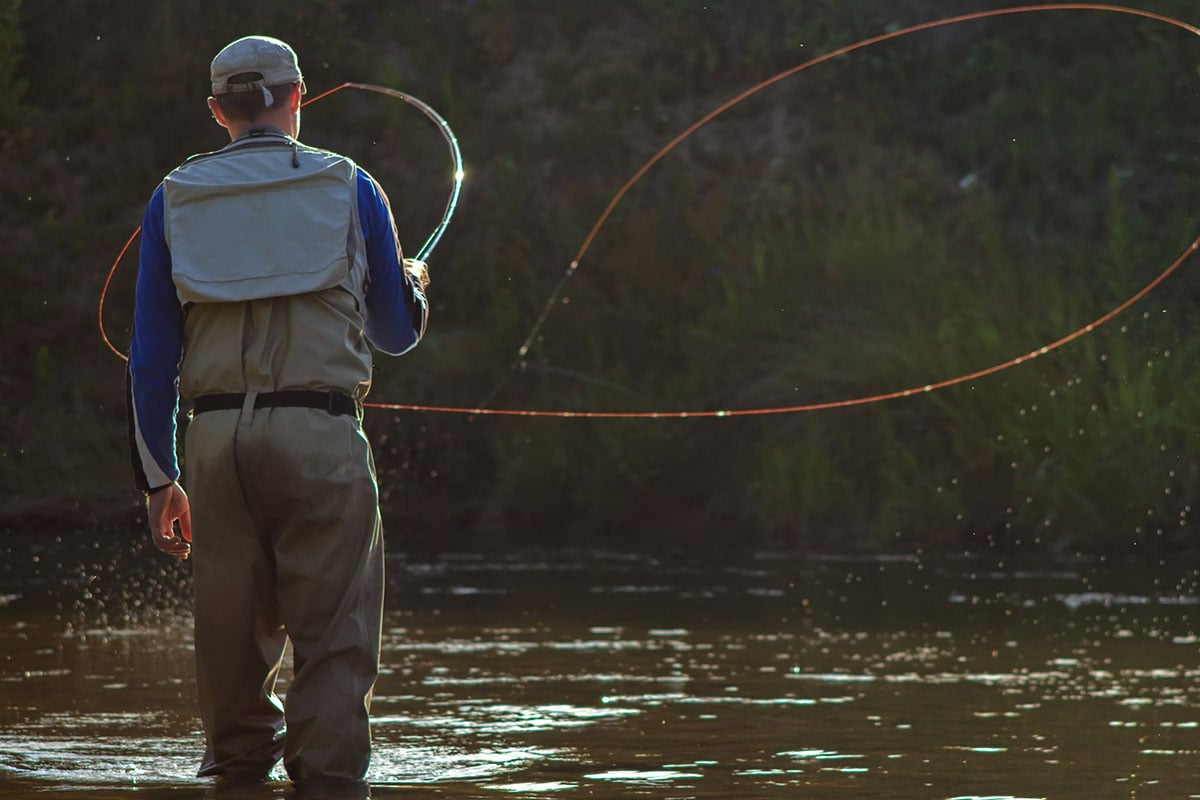
You’re geared up and ready to hit the road – so let’s talk strategy on how to cast to bring the bass in.
Dealing with Wind
Some fish require a long cast, but bass are not one of them. You can cast just 20-30’ when flyfishing bass. The most difficult part of flyfishing bass can be the size of the flies, especially during windy conditions.
If the wind is coming at you, try casting from a low angle to get underneath the wind. You can also try casting from a high angle, which can send your fly through the wind – though this might not give you the best presentation.
If the wind is coming from the side, you’ll need to either cast from a low angle to get below the wind, or adjust your cast for the wind. If it’s coming from your right side, you’ll want to cast a little more to the right with the assumption that the wind will blow it back where you intend it to land. If the wind is coming from behind, you’ll want to do a low angle back cast to get beneath the wind, followed by a high forward cast.
In windy conditions, be careful not to cast so that the fly ends up hooking you! This is a danger if the wind is coming at your casting shoulder, and you may need to switch hands or change directions and back cast to compensate.
Animating & Retrieving Your Fly
Once you’ve cast, you want to give the bass a moment to see your fly before you reel it back in. The bass might not instantly bite – but sometimes they will after a moment or two, especially when you’re using a fly that sits right on the surface.
While you’re waiting, you want to move your fly to mimic a living prey. Strip the line at different speeds to keep your fly moving on the surface. This is more effective than twitching your rod, which will just give you slack and make it more difficult to reel in a fish when it does bite.
If you’re using a fly that goes under the surface, keep the tension up. You need that tautness on your line to see quickly whether a fish is starting to bite. You’ll also want to try a variety of rhythms in stripping your line – experimentation is key here since you won’t be able to see what the fly is doing under the water.
Reeling it In
With bass, you don’t want to lift your rod after the hook has been set. Keep your rod angled toward the fly as you’re retrieving – it’s even alright if the tip of your rod goes under the water. If you lift, the bass has a good chance of getting away.
Conclusion
Largemouth bass are a great introduction to flyfishing, or a return to simplicity for experienced fly fishers. They will bite at a wide variety of flies, the gear you need is straightforward, and they’re easy to find throughout North America. Still, the more you understand about the movement and feeding patterns of bass, the better luck you’ll have. In addition to this guide, make your own observations about the bass in your area, and be prepared to invest time in a single fishing spot. The bass will be your reward!